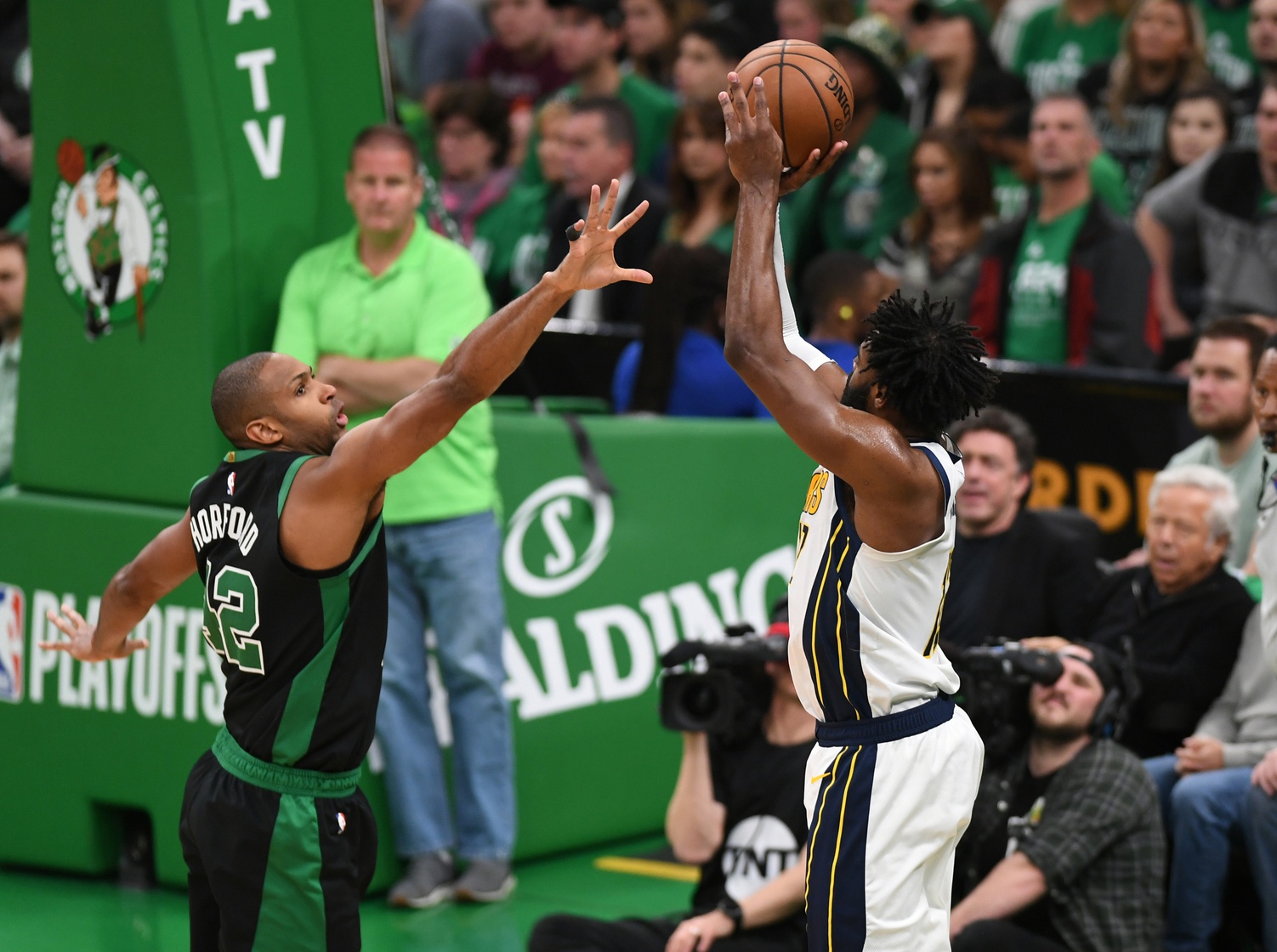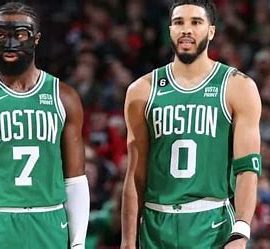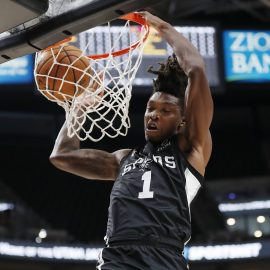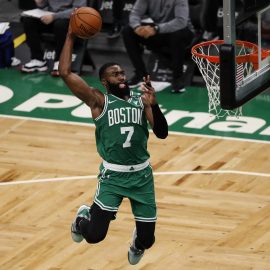Every morning, we compile the links of the day and dump them here… highlighting the big storyline. Because there’s nothing quite as satisfying as a good morning dump.
When the Celtics announced that Smart would miss 4-6 weeks with an oblique tear, the immediate concern was not only how the team would defend Pacers sharpshooting wing Bojan Bogdanovic but also account for all the hustle plays that Smart has made his calling card.
If Sunday’s Game 1 was any indication, the Celtics are hoping an uptick in intensity throughout the roster will help fill Smart’s void. The Celtics leaned heavy on a trio of wings to chase Bogdanovic but everyone on the roster seemed to ratchet up their defensive play and Boston produced one of its finest defensive efforts of the season.
According to the NBA’s advanced tracking data, the trio of Jaylen Brown, Gordon Hayward, and Jayson Tatum joined forces to defend Bogdanovic on 58 of his 68 defended possessions and that triumvirate allowed a mere 2 points on 1-of-7 shooting.
Sunday’s irony is that Marcus Smart wasn’t part of the Celtics’ Game 1 win over Indiana.
The Celtics somehow got to 1-0 in in this first-round series despite shooting 36.4 percent with 20 turnovers, with the simple answer that Indiana only shot 33.3 percent. Bojan Bogdanovic, who only scored four points the last time he was guarded by Smart, had 12 points on 4-for-11 shooting this time against a rotating cast headed by Jaylen Brown.
The Celtics won the rebound battle against this physical opponent by a 55-42 margin, and had everyone from Kyrie Irving to Marcus Morris joining the loose ball/floor burn brigade.
In an ugly, ugly game on Sunday, the Celtics somehow managed to collectively channel their inner Marcus Smart and played with the sort of intensity that was woefully lacking for whole stretches of the regular season.
It remains to be seen whether the Celts will bring that intensity to tomorrow night’s game, but the team’s ability to make ‘winning plays’ on defense when they couldn’t buy a bucket and couldn’t keep their hands on the ball was heartening. Certainly, as lackadaisically as the team shuffled through the final two months of the season, they should be well rested and fresh for the playoffs.
At the very least, the Celtics’ win is a reminder that this team still knows how to win ugly–something that was a hallmark of previous playoff contenders in the Stevens era.
Meanwhile, the Pacers plan on shooting their way out of their game one funk:
“They had a really good third quarter and we didn’t have a good third quarter,” [Thaddeus Young] said after Indiana’s practice at the TD Garden. “We took some really good shots and we just weren’t making them and that’s what was the outcome of the game.”
He’s not wrong. The Pacers scored just eight points in the third quarter and their first made field goal came with 3:28 remaining. Boston put up 26 points on 43 percent shooting, which is a rather normal, average quarter. This wasn’t one of those quarters where a team got white-hot and scored 40 points. Boston scored an unremarkable amount of points. Indiana happened to score remarkably few.
As something of a defensive aficionado, I love it when guys chalk up low scores to missing ‘good shots’. It’s understandable. Most of these guys are shooters first and foremost, and they have to believe that they are, ultimately, in control. It escapes their notice that good defense is not necessarily about limiting shots–or even limiting “good” shots–it’s about making it difficult for players to hit those shots.
Take, for example, Bojan Bogdanovic–and bearing in mind that this is, of course, a small sample size.
A quick scan of his regular season numbers shows that Bojan loves to get the ball near the basket. 44% of his shots were taken from within 10 feet, and his eFG% from there was 60%. Also, he doesn’t like dribbling. Over the course of the regular season, 42% of Bojan’s shots were taken with no dribbles, and his eFG% on those shots was a pretty stunning 68%. He’s especially effective at catch-and-shoot threes: hitting them at a 45% clip over the regular season.
45% of Bojan’s shots during the regular season were taken with him either ‘open’ or ‘wide open’, per the NBA’s definitions.
Now let’s look at game one’s tracking data.
The first surprising stat is that Bojan was ‘open’ or ‘wide open’ on roughly the same percentage of shots as he was during the regular season (45.5%).
So what’s the deal here?
It’s the type of shots Bojan was taking. Only 27% of his shots were taken with no dribbles. The Celtics also did an outstanding job preventing him from taking catch-and-shoot threes–which he hit at a 45% clip during the regular season.
Basically, when Bojan got the ball on the perimeter, the Celtics, collectively, did a very good job forcing him to either pass the ball or put it on the floor and move. Both outcomes are far more desirable–even if they ultimately lead to an open shot by Bojan, because the Celtics have put him in a spot where he’s less comfortable.
Of Boston’s ten point margin of victory, six points came at the FT line, so the difference in FGs was a mere four points. Just two extra made baskets by the Pacers and we’re headed into overtime.
And that’s why you can lose to a team playing first-rate defense and feel that it’s because you had good shots that didn’t fall–not realizing that when the other team’s defense nudges you away from your favorite spots to shots that you miss maybe one more time out of twenty, and does that consistently, it’s going to have a material impact on the outcome of the game.
Add The Sports Daily to your Google News Feed!






